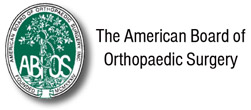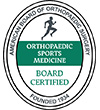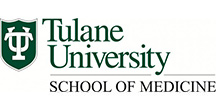Quadriceps and hamstring muscles strength differences in adolescent and adult recreational athletes 6 months after autograft bone-patellar-tendon-bone anterior cruciate ligament reconstruction: A retrospective study
Knee muscle strength recovery after anterior cruciate ligament reconstruction (ACLR) is crucial for a safe return to sport (RTS) but it is poorly described in the adolescent population. Therefore, we compared the knee muscle strength at 6 months post-surgery in adults and adolescents. We hypothesized a greater muscular strength in adolescents 6 months after ACLR.
10 types of exercise to try with arthritis of the knee
Exercises for knee arthritis, such as leg lifts, can strengthen the muscles around the knee joint and help a person stay active. Swimming and elliptical training are also suitable options.
How tennis takes a toll: The leg and foot injuries players need to watch out for
Tennis demands explosive movement like lunges, pivots, sprints and sudden stops. Every serve starts with a push from the toes. Every rally shifts weight between the heel and forefoot. Unlike sports with linear movement, like sprinting, tennis places constant multi-directional stress on the feet and ankles—two of the most frequently injured body parts in the game.
Tests for AC Joint Separation
The acromioclavicular (AC) joint is the superior (upper) portion of the shoulder joint, comprised of the distal (furthest from the center of the body) portion of the collar bone (clavicle) and the acromion process of your shoulder blade (scapula). Problems here can lead to loss of shoulder motion, pain, and difficulty performing tasks that require the use of your arm.
Medial Meniscus Root Tears: Management With Single-Tunnel Repair and Meniscus Centralization
Meniscus root tears (MRTs) are radial tears located near the anterior or posterior meniscotibial attachment, which are often underdiagnosed and associated with accelerated knee osteoarthritis (OA). Medial meniscus posterior root tears (MMPRTs), frequently observed in middle-aged women, lead to altered knee biomechanics and joint degeneration if untreated. While historically managed with meniscectomy, the modern approach emphasizes arthroscopic repair to restore joint stability and delay OA progression.
Are Topical Anti-Inflammatory Creams Worth the Rub?
Chronic pain and inflammation can really take a toll on your physical and mental health. Oral nonsteroidal anti-inflammatory drugs (NSAIDs) like ibuprofen (Motrin®, Advil®) can help reduce pain and inflammation. But they also carry certain risks for cardiovascular and kidney issues, stroke, bleeding and ulcers when you take them for extended periods of time. Fortunately, there are topical anti-inflammatory creams that offer the same amount of relief with significantly reduced risks.
SLAP Tear of the Shoulder
A SLAP tear is an injury to the labrum, the cartilage rim that surrounds the socket of the shoulder joint. SLAP stands for "superior labrum anterior and posterior," meaning that the tear occurs at the front of the upper arm where the bicep tendon connects to the shoulder.1
Metformin Reduces Knee Pain in Knee Osteoarthritis With Overweight, Obesity
Metformin was associated with significant improvements in knee pain, stiffness, and function among patients with knee osteoarthritis and overweight or obesity.
For advances in treating ACL injuries, look to dogs
In a study published April 18 in the Journal of Orthopedic Research, Cornell researchers found that the same protein accumulates in the joints of both dogs and humans after ACL injury. That means using dogs as a model to study ACL injury—and the post-traumatic osteoarthritis (PTOA) that often follows—may vastly accelerate advances in understanding.
Rotator Cuff Tendinopathy Diagnosis, Nonsurgical Medical Care, and Rehabilitation: A Clinical Practice Guideline
This evidence-based clinical practice guideline (CPG) aims to guide clinicians with recommendations covering the assessment, treatment, and prognosis of adults with shoulder pain with suspected rotator cuff (RC) tendinopathy, the nonsurgical medical care and rehabilitation of adults with RC tendinopathy, as well as the return to function and sport for elite and recreational athletes.





